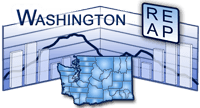Tools & Data
While the Center for Economic and Business Research is happy to create reports and analysis for you - sometimes it is that one quick piece of data that has you searching the internet. Never fear, we have a few favorite places that may have what you are looking for.
National Data
The Center draws from many different data sources to create standard and specialized analysis based reports reflecting national topics. Major sources for national economic data include the US Bureau of Economic Analysis, US Bureau of Labor Statistics, and US Bureau of the Census.
We may be able to save you substantial time and effort in identifying the data you are looking for with an appropriate amount of detail through the use of student researchers and specialized faculty.

People often ask us about inflation often wondering how inflation differs in this region from the rest of the country. We always encourage people to use a broad measure of inflation such as the Consumer Price Index, CPI, for all consumers in the U.S.
One point of confusion related to inflation is the difference between inflation and cost of living. While cost of living is rather obvious and can vary noticeably from region to region inflation is the change in the overall price level in the economy.
Some people ask us about inflation because they have employment contracts or rental contracts that have prices changing with inflation. Again, we encourage people to use a very broad measure of inflation in such cases.
Data on the CPI is available from the US Bureau of Labor Statistics (BLS). Contact us for assistance or with questions.
Cost of living data are not as readily available. However, hundreds of cities in the U.S. estimate the cost of buying a clearly defined bundle of goods several times a year. That is, researchers in hundreds of cities price the exact same bundle of goods a few times a year so they can compare how much the bundle costs in different cities. The cost of the bundle serves as a proxy for the cost of living. And we collect the data for Bellingham.
We regularly use the following sites for national data:
US Bureau of Labor Statistics (BLS) (with data on employment, unemployment, productivity, inflation, and more)
US Bureau of Economic Analysis (BEA) (with data on GDP - including metro level estimates - industry accounts, regional input-output multipliers and much more)
US Bureau of the Census (where we access the American Community Survey data and information in the Economic Census)
As always - you should feel free to contact us with any questions. We're here to help.
Washington Regional Economic Analysis Project (REAP)
An excellent tool in your toolbox of economic date is through the Washington REAP Project. This website program is a set of interactive regional economic tools can examine and assess changing economic conditions and trends in various counties or region of interest.
Through the Washington Regional Economic Analysis Project, it is possible to:
- Create a graphic trend analysis of local economic indicators
- Create graphic shift-share analysis of local employment growth
- View and download customized tabulations of economic data for various regions and the thirty-nine counties of Washington

County Profiles
Every year, the Center gathers economic data from several Washington counties and compiles it into a user-friendly report. These reports offer an up to date overview of the county's economy and include everything from demographics to beer production. Specifically, the County Profiles cover the following topics:
- Demographics including population, labor force, and poverty
- Employment
- Commute times and patterns
- Home sales and rent data
- Retail sales
- High school and college graduate migration
- Cost of living
- County-specific facts
Top Employers
One of the most sought-after data points that we collect is the Top Employers List. Every year, the Center makes hundreds of calls to businesses to determine which companies employ the most people in each Kitsap, Skagit, and Whatcom County. While it may seem straightforward, there are a number of factors that complicate this question from WFH employees to temporary contractors. These reports provide our best estimate of the largest employers in each county.
